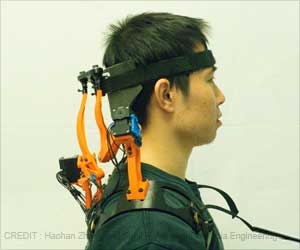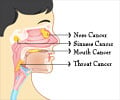The new robotic neck brace device developed by Columbia Engineering University helps guide recovery after head and neck cancer treatment.

Surgically removing lymph nodes in the neck help the doctors to investigate the risk of spread, but may result in pain and stiffness in the shoulders and neck for years afterward.
Identifying which patients may have issues with neck movement "can be difficult, as the findings are often subtle and challenging to quantify," said Scott Troob, assistant professor of otolaryngology - head and neck surgery and division chief of facial plastic and reconstructive surgery at Columbia University Irving Medical Center.
The current techniques and tools that doctors used to access the range of motion in patients who may have lost in their neck and shoulders are somewhat crude.
To develop a more reliable and portable tool to analyze neck mobility, researchers inspired a robotic neck brace that was previously developed to analyze head and neck motions in patients with amyotrophic lateral sclerosis (ALS).
In partnership with Troob's group, they have now designed a new wearable robotic neck brace. Their study published in the journal Wearable Technologies.
Advertisement
In the new study, the researchers used the prototype brace along with electrical measurements of muscle activity, to compare the neck mobility of five cancer patients before and one month after surgical removal of neck lymph nodes.
They discovered that this device can precisely detect changes in patient neck movements during routine clinical visits. This work will lay the foundation for the appropriate identification of patients for intervention.
They also hope that they will be able to objectively quantify their improvement and develop evidence-based rehabilitative programs using the neck brace.
In the future, the researchers hope to investigate larger groups of patients and use the neck brace to follow patients through physical therapy to develop evidence-based protocols for rehabilitation. They also like to develop similar braces for other surgical sites, such as the forearm, ankle, or knee.
Source-Medindia














